Welcoming a variety of houseplants into your home not only enhances its aesthetic appeal but also contributes to your overall well-being. However, creating a flourishing indoor oasis demands more than simply picking the prettiest plants from your local nursery. One key element to ensuring your houseplants thrive is providing them with the right lighting conditions.
With countless variables to consider, such as natural and artificial light sources, intensity, and photoperiods, it’s crucial to understand how each aspect impacts your plants’ health. In this comprehensive guide, we delve into the intricacies of light for houseplants, offering expert advice on creating an ideal environment that nurtures growth and vitality.
So, let’s dive in and uncover the secrets to choosing the best light sources for your houseplants.
Understanding the Basics of Light for Houseplants
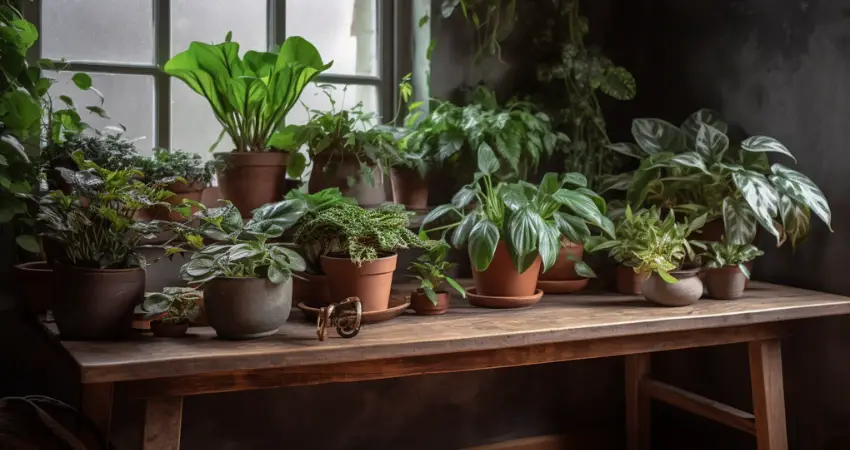
Photosynthesis
Houseplants rely on a process called photosynthesis to create their food. This process requires sunlight to convert carbon dioxide and water into glucose, which fuels their growth. The efficiency of this process is directly linked to the quality and intensity of light that plants receive. By understanding the basics of light, we can create an environment that promotes healthy growth in our houseplants.
Light Spectrum
Sunlight is composed of various colors, each with its specific wavelength. Houseplants primarily use blue and red light for photosynthesis, while green light has less effect on their growth.
- Blue light (400-500 nm): This range of wavelengths is essential for promoting foliage growth, overall plant health, and regulating the opening of stomata (tiny pores on the surface of leaves responsible for gas exchange). Blue light also encourages compact growth, preventing legginess.
- Red light (600-700 nm): This range of wavelengths stimulates flowering, fruiting, and root development. Red light also plays a significant role in the production of chlorophyll, which is crucial for photosynthesis.
- Green light (500-600 nm): Although green light is mostly reflected by plants, making them appear green to our eyes, recent research suggests that it can penetrate deeper into the plant tissue, benefiting plants with dense foliage.
Light Intensity
Light intensity refers to the amount of light energy that plants receive. Different plants have different light intensity requirements, which can affect their growth and development. Light intensity is measured in units called foot-candles (fc) or lux. Generally, low-light plants require 50-250 fc (500-2,500 lux), medium-light plants need 250-1,000 fc (2,500-10,000 lux), and high-light plants demand over 1,000 fc (10,000 lux).
Photoperiod
The photoperiod is the duration of light exposure each day. Some plants require long periods of light, while others thrive with shorter photoperiods. For example, short-day plants, such as poinsettias and chrysanthemums, need long nights to initiate flowering, while long-day plants, such as many vegetables and some ornamentals, require extended daylight hours.
Assessing Your Houseplants’ Light Requirements
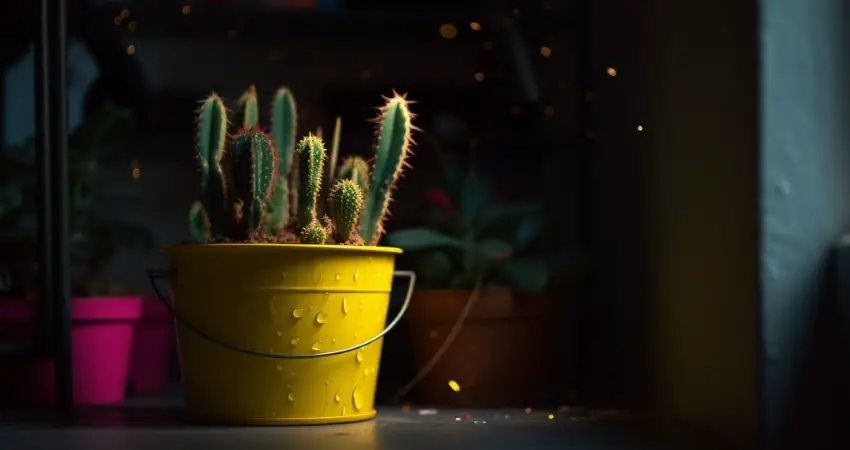
Types of Houseplants
Houseplants can be classified into three categories based on their light requirements:
- Low-light plants: These plants can thrive in dimly lit areas, making them suitable for rooms with north-facing windows or limited natural light. Examples include snake plants, pothos, and ZZ plants.
- Medium-light plants: These plants require bright, indirect light and are best placed near east or west-facing windows. Examples include monstera, spider plants, and philodendrons.
- High-light plants: These plants need direct sunlight for several hours a day, making south-facing windows the ideal spot for them. Examples include succulents, cacti, and some flowering plants like hibiscus and geraniums.
Signs of Inadequate Light
Some indications that your plants may not be receiving enough light include:
- Leggy growth: Stretched, thin stems with sparse foliage indicate that your plants are reaching for more light.
- Yellowing leaves: A lack of chlorophyll production can cause leaves to turn yellow, signifying that your plants are not receiving adequate light for photosynthesis.
- Slow growth: Insufficient light limits the energy production in plants, resulting in stunted growth and fewer new leaves or blooms.
Conversely, signs of too much light exposure can include:
- Leaf scorch: Brown or black spots on leaves indicate sunburn, which can occur when plants receive too much direct sunlight.
- Fading colors: Excessive light can cause the colors of foliage and flowers to fade or bleach.
- Wilting: Despite sufficient watering, plants may still wilt if they’re exposed to too much direct sunlight.
Methods for Measuring Light Levels
To accurately determine the light levels in your home, you can use tools like:
- Lux meter: A device that measures the intensity of light in lux. This tool provides precise readings, helping you determine if the lighting conditions are suitable for your plants.
- Light apps: Smartphone apps that estimate light levels using your device’s camera. Although not as accurate as a lux meter, these apps can still offer a general idea of the light conditions in a room.
Natural Light Sources
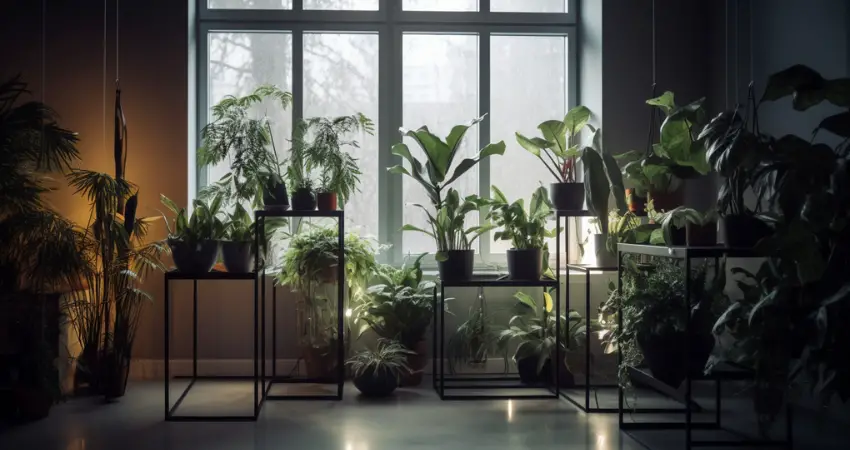
Window Orientation
The direction your windows face significantly impacts the quality and intensity of natural light your plants receive:
- North-facing windows: These windows receive consistent but low-intensity light throughout the day, making them ideal for low-light plants.
- East-facing windows: These windows provide bright morning light and cooler afternoon shade, which is suitable for medium-light plants.
- South-facing windows: South-facing windows receive the most sunlight throughout the day, providing the high light intensity required by sun-loving plants.
- West-facing windows: These windows offer bright afternoon sunlight and can accommodate medium to high-light plants.
Window Types and Light Transmission
The type of window glass can also affect the light transmission and quality available for your plants:
- Single-pane windows: These windows offer the highest light transmission but provide poor insulation, which can cause temperature fluctuations.
- Double-pane windows: These windows provide better insulation and maintain more stable temperatures. However, they transmit slightly less light than single-pane windows.
- Tinted windows: Tinted windows reduce light transmission and can alter the light spectrum, potentially affecting plant growth.
Maximizing Natural Light
To make the most of natural light, consider the following tips:
- Pruning: Regularly prune trees and shrubs outside your windows to allow more light into your home.
- Reflective surfaces: Use mirrors, light-colored walls, and reflective furniture to increase the amount of light available to your plants.
Artificial Light Sources
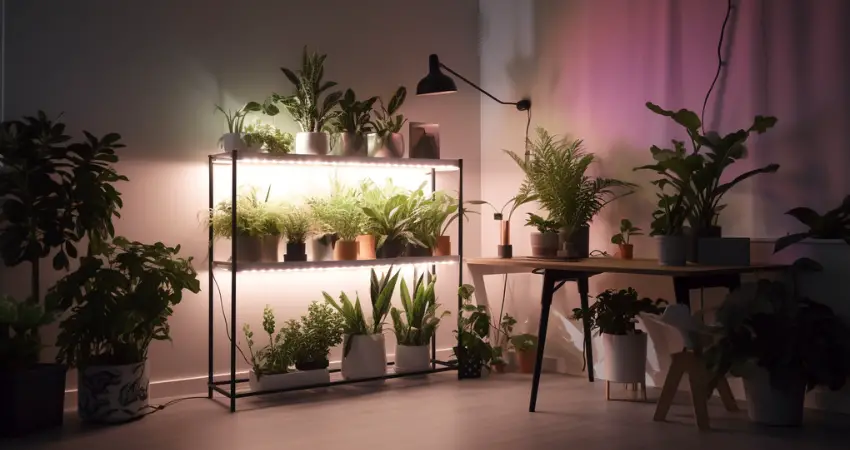
Types of Artificial Lights
There are various artificial light options for houseplants:
- Incandescent bulbs: These traditional bulbs emit red light but are inefficient and generate excessive heat, making them less suitable for houseplants.
- Fluorescent lights: These energy-efficient lights are available in different sizes and types, including T5, T8, and T12. They emit a balanced spectrum of blue and red light, making them suitable for houseplants.
- Compact fluorescent lights (CFLs): These energy-saving bulbs are similar to fluorescent lights but fit into standard light fixtures.
- Light-emitting diode (LED) lights: LED lights are energy-efficient, long-lasting, and produce less heat than other artificial light sources. They can be customized to provide specific light spectrums for houseplants.
- High-intensity discharge (HID) lights: These powerful lights, including metal halide and high-pressure sodium bulbs, are often used in commercial greenhouses but may be too intense for typical home settings.
Factors to Consider When Choosing Artificial Lights
When selecting artificial lights for your houseplants, consider the following factors:
- Color temperature: Choose bulbs with a color temperature between 5,000-6,500 Kelvin, which closely resembles natural daylight.
- Light output: Ensure the light output is adequate for your plants’ needs. Check the lumens rating on the bulb packaging, as a higher rating indicates more light output.
- Energy efficiency: Opt for energy-efficient bulbs, such as LEDs or CFLs, to save on electricity costs.
- Cost: Consider the initial cost of the bulb and the fixture, as well as the long-term costs of electricity usage and bulb replacement.
- Lifespan: LED bulbs have the longest lifespan, followed by CFLs, fluorescent lights, and incandescent bulbs.
How to Set Up Artificial Lighting
When installing artificial lights for your houseplants, follow these guidelines:
- Distance from plants: Keep the light source close to your plants but far enough to prevent overheating. Generally, LED lights should be 12-24 inches away, while fluorescent lights can be placed 6-12 inches from the plants.
- Light placement: For even light distribution, place the light source above or slightly angled towards your plants. For plants with dense foliage, consider using multiple light sources to reach the lower leaves.
- Light duration: Set up a timer to regulate the photoperiod for your plants. Most houseplants require 12-16 hours of artificial light per day, followed by a period of darkness.
Integrating Natural and Artificial Light
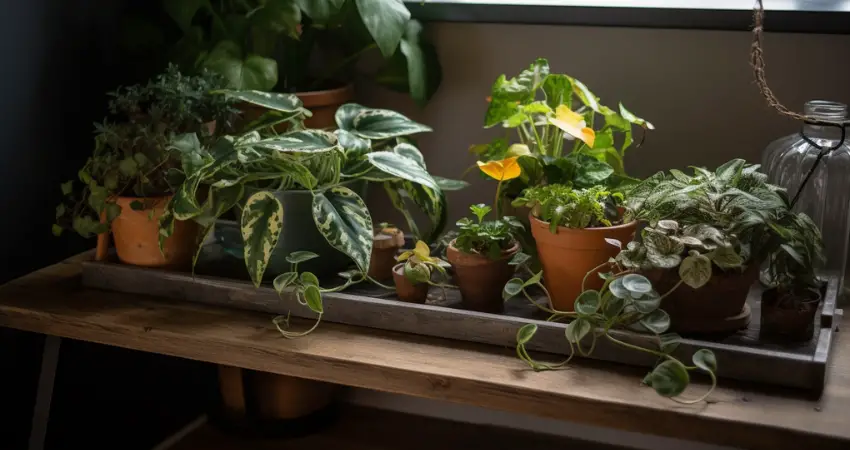
Combining natural and artificial light sources can help you achieve optimal lighting conditions for your houseplants. Here are some best practices for integration:
- Supplement natural light: Use artificial lights to supplement natural light, especially during the darker winter months or in rooms with limited sunlight.
- Balance light exposure: Place high-light plants near south-facing windows and use artificial lights to supplement their light needs, while low-light plants can be placed near north-facing windows or in shaded areas.
- Using timers and automation: Timers and smart home systems can help you automate your lighting schedule, ensuring your plants receive consistent light exposure throughout the day.
Tips for Maintaining Optimal Light Conditions
To ensure your houseplants continue to receive adequate light, follow these maintenance tips:
- Regularly rotate plants: Rotate your plants every few weeks to ensure all sides receive equal light exposure, promoting even growth.
- Pruning and grooming: Remove dead or yellowing leaves to improve light penetration and air circulation around your plants.
- Adjusting light levels seasonally: Increase the duration and intensity of artificial light during winter months when natural light is scarce.
Conclusion
Understanding and providing the right lighting conditions are crucial for the health and growth of your houseplants. By considering factors such as natural light, artificial light, and plant requirements, you can create the optimal environment for your plants to thrive. Continue learning about plant care and experimenting with different lighting solutions to ensure your houseplants remain healthy and vibrant.
